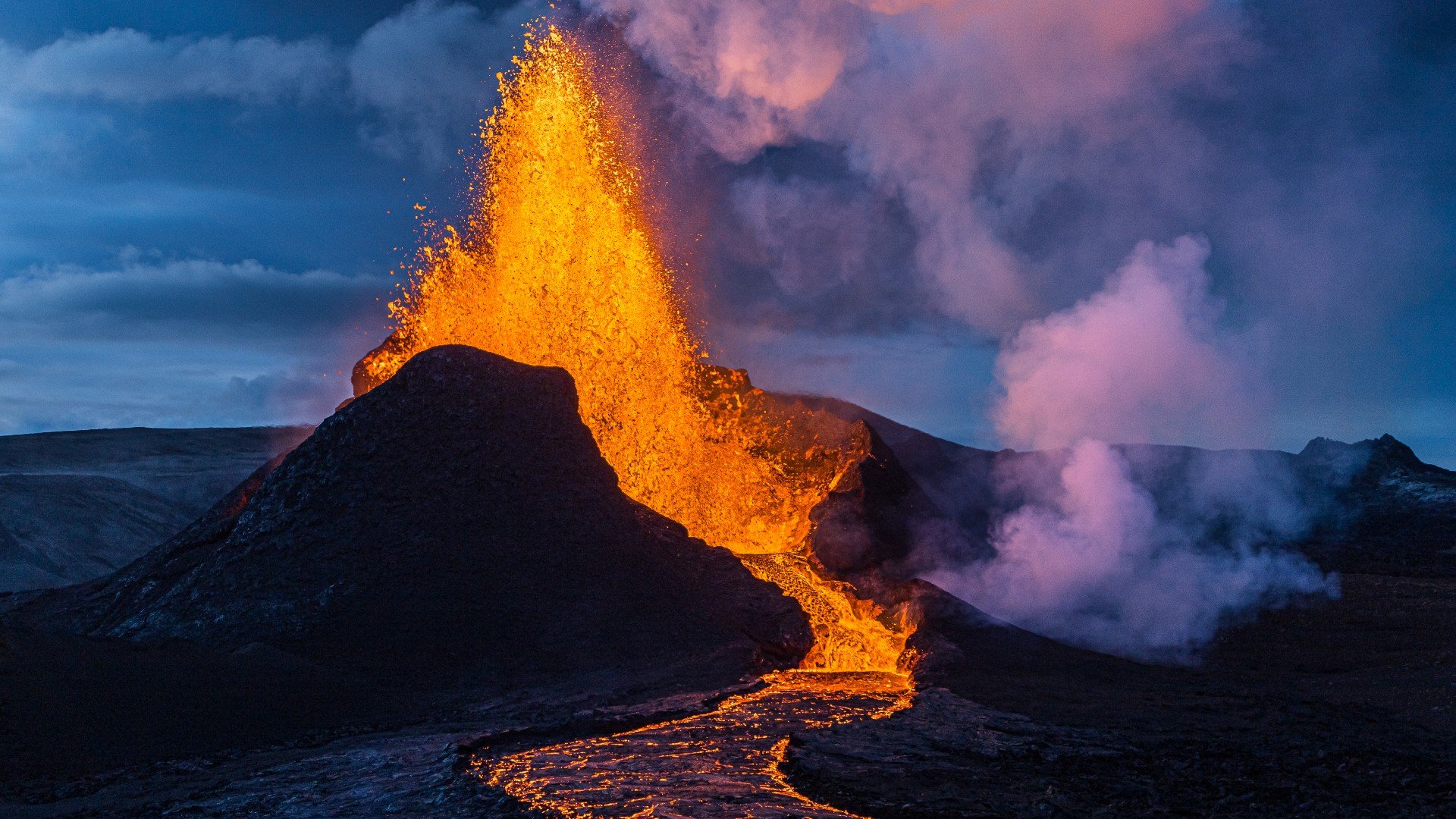After 38 years of silence, the world’s largest volcano, Mauna Loa, began erupting late Sunday night. Residents are being told to review preparedness plans as the USGS keeps a close eye on the volcano.
The world’s largest active volcano, Mauna Loa, erupted late Sunday night after laying dormant for nearly 40 years, the U.S. Geological Service's (USGS) volcanic activity service reported. As a fire-orange glow illuminated the sky on Hawaii’s Big Island, an ashfall advisory was issued for the island and surrounding waters.
The eruption in Hawaii Volcanoes National Park is “confined to the summit” and is not threatening downhill communities, according to the USGS. As the early eruption stages of this volcano can be very dynamic and the location and advance of lava flows can change rapidly, the Hawaiian Volcano Observatory (HVO) is closely monitoring it, USGS warned.
Due to winds potentially carrying volcanic gas and fine ash downwind, an ashfall advisory was in effect across portions of the Big Island of Hawaii and surrounding waters. As of 9 a.m. HST, the ashfall advisory was lifted.
“People with respiratory illnesses should remain indoors to avoid inhaling the ash particles and anyone outside should cover their mouth and nose with a mask or cloth,” the National Weather Service in Honolulu warned.
Ashfall can damage buildings and vehicles, contaminate water supplies, disrupt electrical systems and sewage and damage or kill vegetation, the NWS said in its warning.
Although no evacuations have been requested, residents were voluntarily evacuating from the South Kona coast and Hawaii County officials opened at least two shelters, Hawaii News Now reported. Residents who are at risk for Mauna Loa lava flows are being told to review preparedness plans and check with Hawaii County Civil Defense for additional information.
The ground is shaking and swelling at Mauna Loa, the largest active volcano in the world, indicating that it could erupt. Scientists say they don't expect that to happen right away but officials on the Big Island of Hawaii are telling residents to be prepared in case it does erupt soon. This map shows the lava flow hazard level zones for the island.
The ground is shaking and swelling at Mauna Loa, the largest active volcano in the world, indicating that it could erupt. Scientists say they don't expect that to happen right away but officials on the Big Island of Hawaii are telling residents to be prepared in case it does erupt soon. This map shows the lava flow hazard level zones for the island.
“Lava flows are not threatening any downslope communities and all indications are that the eruption will remain in the Northeast Rift Zone,” USGS wrote in an update at 6:30 a.m. HST.
The Hawaii Department of Transportation (DOT) issued a travel advisory for Hilo International Airport, which is roughly 40 miles east of the volcano. All passengers with flights to Hilo International Airport or the Ellison Onizuka Kona International Airport, which is roughly 35 miles northwest of the volcano, are urged to check with their airline prior to heading to the airport.
Southwest Airlines has suspended operations at Hilo International Airport on Monday due to the ashfall advisory, Sam Spangler, a reporter for KHON2 in Honolulu, tweeted.
On Monday morning, the volcano alert level was upgraded from an advisory to a warning.
Mauna Loa has been in a “heightened state of unrest,” according to a report from CNN in late October, which pointed out an increase in seismic activity and increased earthquake rates.
According to the USGS, earthquake activity increased from five to 10 quakes a day in June 2022, to some 10 to 20 quakes a day in July and August. On Sept. 23 and 29, peak numbers of 100 earthquakes a day were recorded, CNN reported.
This increase in seismic activity resulted in Hawaii Volcanoes National Park to close Mauna Loa summit to all backcountry hikers until further notice.
Since records began in 1843, Mauna Loa has erupted 33 times, averaging one eruption every 5 years.
“However, most eruptions occurred prior to 1950, averaging 3.5 years between eruptions,” USGS wrote in a report about the volcano, which takes up more than half of the Big Island in Hawaii and rises 13,679 feet above the Pacific Ocean. "Since 1950, there have only been two eruptions; a summit eruption 25 years later in 1975 and by a rift eruption 9 years later in 1984.”
Sunday’s eruption has ended the longest quiet period on record.
Related Stories:
By Allison Finch, AccuWeather staff writer
Updated Nov. 28, 2022 7:45 PM EST

